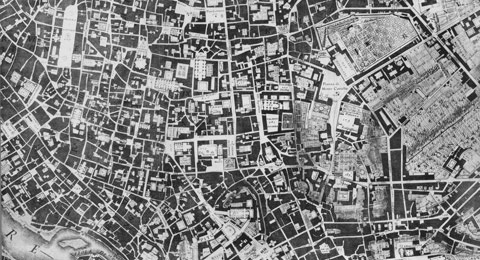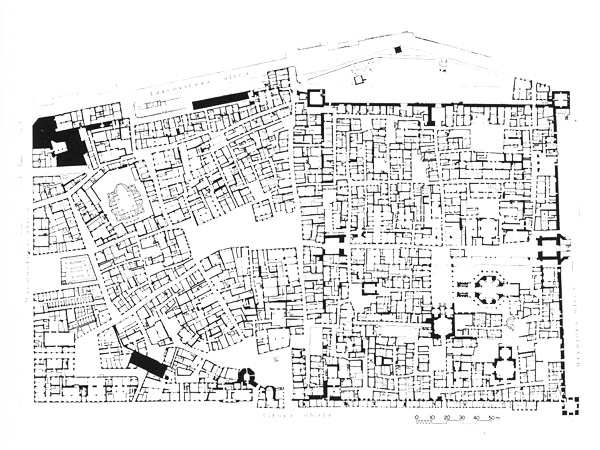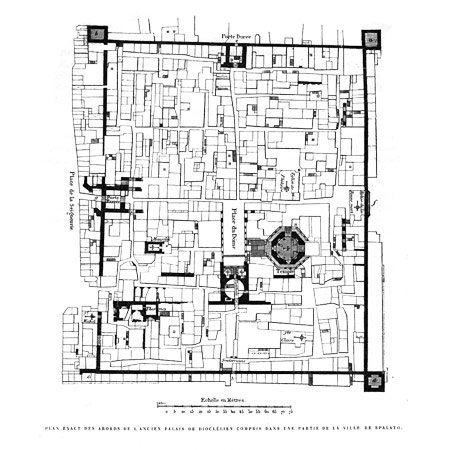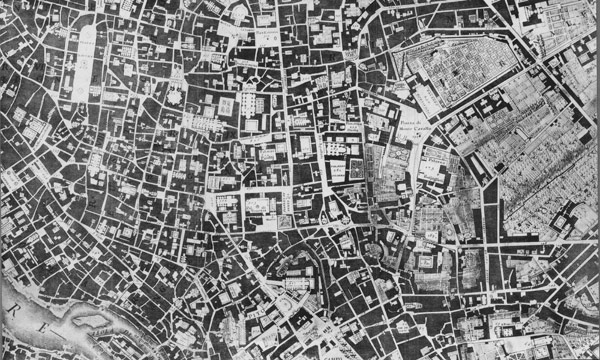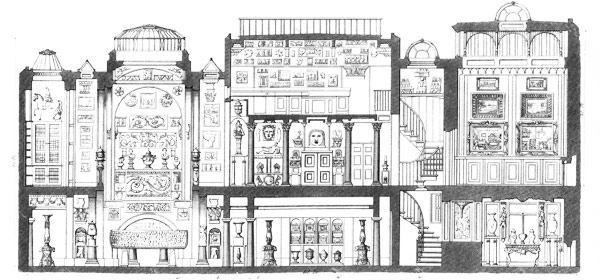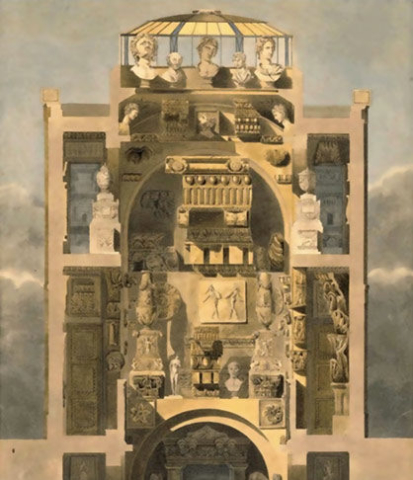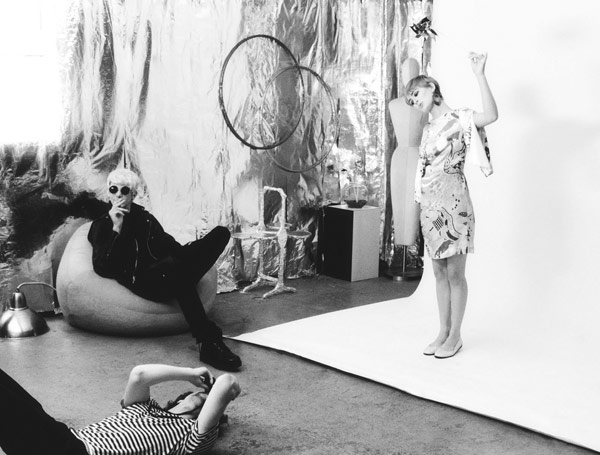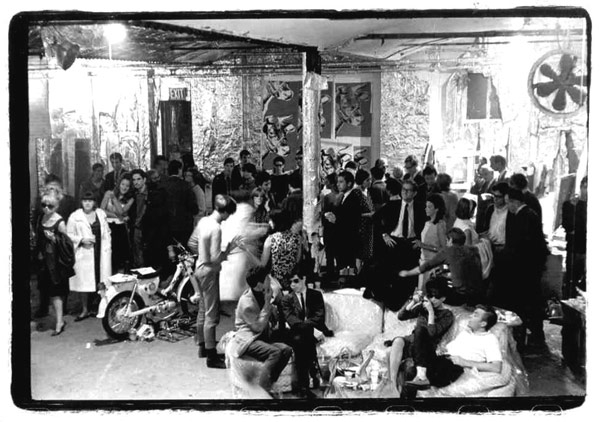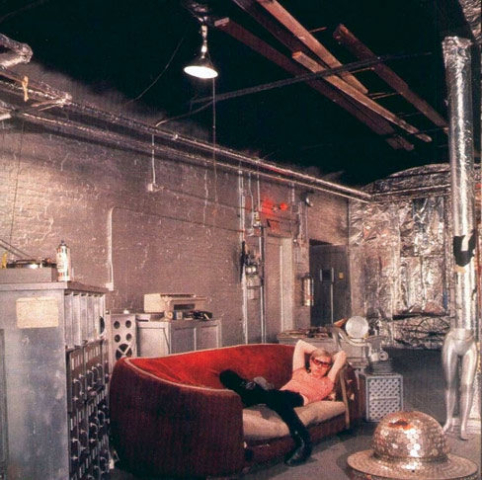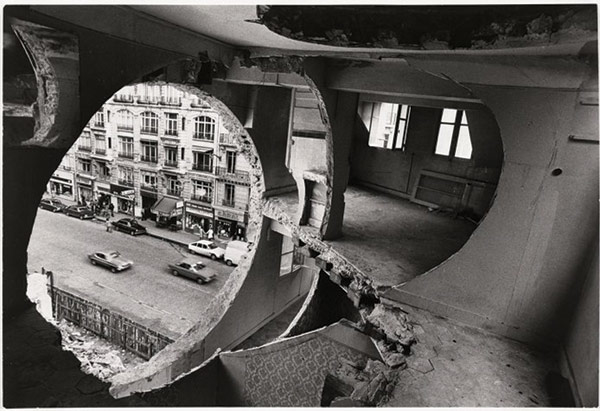Idis Turato
Važan element u spoznaji i tumačenju trenutka u kojem se nalazi suvremeni grad i urbani teitorij, njegova je inspirativna i bogata slojevitost nastala taloženjem i rastom kroz vrijeme. Prostorno-vremenski sedimenti grada i arhitekture, te ubrzani urbani razvoj u posljednjim desetljećima, snažno definiraju kontekst u kojem kao arhitekti djelujemo i projektiramo. Pored izvorne slike grada ili građevine koja je projekirana i mišljena kroz urbanističke planove i projekte postoji i trenutačna, stvarna i poticajna slika trenutka koja oblikuje prostor za drugačije mogućnosti djelovanja i interpretacije.
Povijesni primjeri poput Nolieve karte Rima, ili plana Splita sa tlocrtima kuća, govore nam najbolje kako trezven i precizan pogled na grad, njegovo iscrtavanje u najsitnijim detaljima i urbanim elementima , otvara niz novih slojeva i gradskih tokova kojih nismo svjesni gledajući i živeći svakodnevnicu prostora oko nas. Jasno nam je da takva uzbudljiva urbana matrica nije nastala samo planom i kontroliranim postupkom, već rastom u vremenu, kroz monoštvo malih ali promišljenih arhitektura, intervencija i gradnji nastalih kvalitetnim pretapanjem prostora između građevina i grada, kao ploda urbane strategije i društvenog konsenzusa građana Rima ili Splita.
U tom svjetlu gradovi, njegovi djelovi, kvartovi i zgrade mogu doživjeti svojevrsnu kontrolu, inventuru i analizu izvršenog. Trezven i kritičan pregled, editiranje, redefiniciju urbanih i arhitektonskih parametara, u odnosu na davno postavljene dobre, ili loše polazne osnove. Slojevi i djelovi kvartova, napuštenih tvornica, gradskih ili seoskih kuća i imanja, sadrže poticajnu uzbudljivost upravo u njegovom sloju na prvi pogled nevidljivog i anonimnog djela. Nataložen je cijeli novi smisao arhitekture nastao tiho i bez ikakve pompe i plana, rastući kroz različite namjene i funkcije, daleko od velikih projekata, ali gotovo organski srastao sa postojećom planiranom i projektiranim tkivom. Ovakvi djelovi i cjeline bogatstvo su za novu i drugačiju upotrebu. To su prostorne klice novog poticajnog urbanog razvoja i procesa novog društvenog, socijalnog i urbanog zamašnjaka. To je nevidljivi i nedovoljno istraženi grad prepun snažne i drugačije energije od one u fokusu interesa i centra pažnje. Tome i takvom plodnom i očuvanom okruženju svakako možemo zahvaliti zbog uvriježenog i standarnog pogleda na arhitekturu i povijesni grad koji se tumači i vrednuje samo kroz prizmu klasične školske povijesti umjetnosti, te nije spreman niti educiran, a još manje senzibiliziran za silno bogatstvo i mnoštvo “nepoznatih” struktura, mehanizama rasta i utjecaja na slojeve gradskog teritorija. Sa druge strane ovakva arhitektura i grad nije “tabula rasa” pogodna za lako, predvidivo, ekstenzivno i brzo konzumiranje, te kao takav ostaje pošteđen od provincijalnog gospodarenja teritorijem i arhitekturom u posljednja dva desetljeća. Djelovanje u takvom kontekstu traži promišljen, precizan i poticajan odgovor u metodi i principu njegovog budućeg rasta.
Kao i grad tako i njegove kuće vremenom dobivaju drugačiji i složeni oblik. Poput sedimenata grada i arhitektura može kroz svoje usložnjavanje i periodično editiranje poprimati različite slojevite, neočekivane elemante i sadržaje. Poput kuće (danas muzeja) Sir John Soan House u Londonu, arhitekt je kroz vrijeme gradio i nadograđivao svoj dom, precizno i strpljivo razgrađivao, nadograđivao i istraživao tri gradske parcele, tri postojeće gradske kuće, tri različita ambijenta, slažući ih u novi uzbudljivi i živopisni svijet. Nastao je svijet u kojem se taloži, pretapa i živi paralelno nekoliko prostornih ambijenata, namjena i različitih događaja. Ova metoda moguća je i danas. Naravno, drugačijih oblika i namjena, ali suštinski ona nam osigurava kvalitetan i siguran oslonac u promišljanju i gradnji arhitekture današnjice. Da je to sigurno tako, samo stoljeće nakon Soana, Andy Warhol vrlo slično raznim događanjima, akcijama, manipulacijama, stvara i projektira svoj Factory, za kojeg ne znamo kada je i da li je stan, kada galerija, kada atelieur, kada je muzej a kada kuća zabave i razvrata raskalašenih party-a. Prostor se oblikuje kroz događaje, te raste i transformira sebe i okolinu kroz vrijeme, stvarajući paralelno nove društvene navike i lifestyle.
Neki projekti, aktivnosti i realizacije sa ovih teritorija koje donosim u ovom prilogu, govore i pokazuju nam drugačiji put i mogućnost razvoja metode konsolidacije arhitekture i grada unutar postojećih gabarita i prostornih resursa. Trošenje i konzumiranje teritorija i novih prostora potpuno je pogrešno. Radovi prikazani u ovom prilogu prepoznaju metodu projektiranja kroz mjerilo malih ali konkretnih promjena, akcija, događaja, “urbanih proteza”, “arhitektonskih parazita”, i ad-hock intervencija koje se u vremenu razgrađuju ili nadograđuju. Takvi urbani ili arhitektonski elementi reprogramiraju, dekomponiraju i usložnjavaju zatečenu strukturu, a sve u svrhu nove i drugačije upotrebe i stvaranja novih pravila u specifičnom urbanom življenju.
Bilo da se radi o zapuštenim starim gospodarskim građevinama, nedovršenim strukturama iz prošlog sustava, dijelovima kuća, suterena, krovnim terasama, strehama, trijemovima, ili otvorenim spontano nastalim vrtovima i ledinama svi ovi djelovi, fragmenti i krhotine grada dio su cjeline koji se mogu inteligentno i strpljivo re-definirati, re-upotrijebiti, re-ciklirati. Uviđamo da su ovakvi djelovi urbane matrice svojevrsni “gotovi elementi”, pripremljeni i spremni fragmenti koji u stapanju i drugačijoj upotrebi u kontekstu novoga grada počinju biti snažna spona u redefiniciji kolaža urbanog arhipelaga. Važan element u projektiranju ovom metodom i spoznajom podrazumjeva polazno stanje arhitekta koje se ne osvrće nostalgično u prošlost, ali jednako tako nepoželjan je pristup apriornog brisanja pod isprikom sređivanja stanja, ostavljanja traga i poruke vremena, ili isključive ekonomije i zakona tržišta.
Gledajući kartu i sliku primjerice Rijeke, ili nekih drugih postindustrijkih gradova sa naših teritorija shvaćamo da je klasični urbani razvoj preuzet iz 20-og stoljeća, nadopunjen ponekom recentnom urbanom interpolacijom, davno stao u vremenu. Takvo stanje traje već dugo. Svjesni smo da će život grada i njegovih dijelova ovisiti o transformaciji i drugačijoj upotrebi gradskih djelova i građevina. Klasična obnova i revitalizacija nije odgovor na ovaj izazov i pitanje. Potrebno je stvar sagledati iz drugoga kuta, s druge točke gledišta. Dijelovi grada i građevna masa su i okvir za stvaranje novog urbanog krajolika, nove gradske prirode. Silueta i obrisi gradova ostavljaju danas osjećaj napuštene romantične slike izgubljenoga vremena. Njihova energija pojavnosti i slika pomaknutog vremena ostavljaju osjećaj scenografije filma u kojemu se fizički nalazimo. Stoga nova arhitektura i urbana modifikacija mora prvenstveno računati na sad već pitoresknu i romantičnu energiju postojeće građevinske mase i istu započeti razgrađivati i u nju ubacivati scenarij novog socijalnog i društvenog kretanja arhitekture i grada. Arhitektonska intervencija u ovome slučaju podrazumijevaju iščitavanje postojećih “gotovih elemenata”, njihov oblikovni, konstruktivni i osjećajni kod, te insertiranje, ubacivanje novih elemenata nastalih potrebom novog korištenja i upotrebe. Novi elementi se poput “uređaja” i unapred spremljenih elemenata uključuju i spajaju na postojeću strukturu, podižući funkcionalnu, ali i osjećajnu učinkovitost arhitektonskog sklopa na viši i drugačiji stupanj upotrebljivosti. Poticaji i izazovi infrastrukture, energetske održivosti, fizikalnih i tehničkih dopunjavanja zatečenog konteksta mogu proizvesti nove izazove, mogućnost organskog srasta, pojavnost i fizičnost drugačijeg i neočekivanog oblika, te proizvesti kroz njih arhitektonske i urbane oblike drugačijeg grada. Na mjestima dodira i interferencije postojeće i zatečene strukture i dijelova grada ili arhitektonskog sklopa, umeće se novi arhitektonski implant, klica nove upotrebe. On je prijelazni urbo-arhitektonski element, prostorno-programski konstrukt, element kroz kojega se postojeća struktura i okolina, grad spajaju, transformiraju i dešavaju u novoj pojavnosti i vremenu. Nova struktura mora preuzeti iz postojećeg elementa prepoznatljivu logiku i strukturu organizacije koja se može upregnuti u novo stanje. Novi dijelovi i elementi stapaju se s novonastalim kontekstom i definiraju nova pravila organizacije. Oni moraju garantirati i izazivati proces nove upotrebe. Oni nisu cilj, nego sredstvo u kojeme se kroz proces u vremenu definira novi arhitektonski sklop.
U slučaju neuspjeha umeću se i analiziraju novi elementi. Nova struktura ne mora služiti samo dobrom i skladnom rastu. Ova arhitektonska dogma, težnja k idealu ili dobru može biti i sputavajući, otežavajući i uspavljujući faktor koji ne dovodi stanje arhitektonske transformacije do svojih opasnih i nepredvidivih rubnih stanja, stanja pred kolaps ili destrukciju. Poput primjera i iskustva iz New Yorka, Green Streeta, briljantnih i uzbudljivih “prostornih rezova” Gordon Matta Clarka, koji slojevito govore o slojevima grada i arhitekture, o njihovoj povijesti, prolaznosti i mogućnosti drugačije nadogradnje i resekcije. Tim se iskustvima vodimo pa je stoga moguće redefinirati arhitekturu zatečenog prostora grada i transformirati je u nova poticajna i neočekivana stanja. Proces razgradnje i transformacije podrazumijeva konstantnu upotrebu i društveno-socijalno potvrđivanje. U tijeku procesa struktura se podvrgava raznolikim utjecajima, ona je hibridna i svaki put ima svojstva prototipa koji se konstantno usavršava. Novonastali odnosi mogu biti na prvi pogled mali i nedovoljno snažni u formalnom efektu nove strukture. No, njihov društveni pomak u odnosu na zatečeno stanje može biti nemjerljiv.
Primjeri koje prikazujem u ovom broju Arhitektona govore o sličnim ili istim arhitektonskim ciljevima u reorganizaciji ili reupotrebi zatečenog konteksta, ali izvedeni u potpuno različitim okruženjima, metodama i alatima. Kuće za odmor na Silbi predstavlju svojevrsne “plug-in” elemente za nadopunjavanje života, Zadarske krletke u Kneževom Dvoru bave se opnom, kožom koja transformira i drugačije tumači kontekst povjesne građevine, Splitski Dom Mladih akcijama i događajima snažno redefinira okvir u kojem se događa, dok “Hartera Hotel” uvodi čovjeka, i skupine ljudi u oblikovno sadržajni limbo koji manipulira tjelesnim osjećajima i percepcijom. Svaki od ovih priznajem brižljivo odabranih primjera pokazuje bogatstvo mogućnosti i realne metode kojima kao arhitekti snažno djelujemo. Potrebno je samo dobro promisliti i definirati strategiju kojom djelujemo, i koja će rezultirati na snažnijim promjenama i novim mogućnostima.
Dati odgovor što bi arhitektura zatečenog konteksta i slojevi suvremenog Grada htjeli biti, ili u što bismo ih htjeli pretvoriti, prvo je i presudno pitanje. Lako se može dogoditi, a pokazuju recentni primjeri obnove industrijskih područja, skladišta, da transformaciju često prati veliki stupanj urbane gentrifikacije. To nam nikako nije cilj i u samome startu moramo se opredijeliti za drugačiji i bolji proces. Nije nam cilj urediti stare građevine, sačuvati njihova pročelja i “balzamirati” lik, niti stvoriti mrtvu kulisu za dosadan i predvidiv scenarij življenja. Često je ambicija planera i ljudi koji razvijaju dio zapuštenoga, nanovo otkrivenog kvarta, iseljavanje dijela populacije i čišćenje strukture društvene različitosti. Umivanje i redekoriranje scenografije samo za neke i rađanje jednoga društvenog obrasca ponašanja nikako nam ne može biti cilj. Tada kada drastično mijenjamo uvjete života ne možemo reći da rehabilitiramo određeni kvart ili područje, mi nadilazimo pojam rehabilitacije i radikalno mu mijenjamo uporabu. S druge strane proces prije spomenutoga “balzamiranja” je potpuno obrnut. Izvodimo i ukrašavamo stara pročelja, radimo kulisu romantične scenografije prošlih stoljeća, a unutar strukture ubacujemo male stanove, uske sobičke i duge i tamne hodnike. Cilj je upotrijebiti energiju mjesta i konteksta u kojega se brutalno i snažno ubacuje novi program. Poput Tschumievog primjera “Skakača motkom u Sikstinskoj kapeli”, iz poznate “Arhitekture i Disjunkcija”, tako i ovdje program i arhitektonski okvir moraju biti u neočekivanom i brutalnom srazu i konfliktu. Samo takav pristup garantira kvalitetan i nepotrošiv proces u vremenu. Dakle, novi stanovi mogu i trebaju imati stropove visoke devet metara, dok se biblioteka nalazi na galeriji, mostu stare kranske dizalice koja je još uvijek u funkciji i kreće se stanom. Ono o čemu nam svjedoči ovakav pristup više je od rehabilitacije i drugačije od mutacije koja radi pomak i drugačiji pogled na prostor estetskog poimanja i čitanja mjesta.
 Svaki od ovdije pokazanih projekata, i niz sličnih izvedenih i budućih situacija svojevrsnog kvalitetnog nadograđivanja i editiranja postojećeg konteksta nikad ne bi smio imati svoj kraj i konačni cilj, a još manje konačni oblik. To je prostor i okvir konstantnoga pulsiranja, prostor koji se definira vremenom i aktivnošću. Nikakva institucionalizacija mjesta nije poželjna, jer dovodi do mono funkcije i križanja istih elemenata i jedinki. Ovakav prostor i proces koji se konstantno “događa” i konačno htijenje i bit projekta mora, poput svih stvari koje nas okružuju, imati mogućnost pokretanja, premještanja, fleksibilnosti i nadopune-dograđivanja. Poput programa i usluga stvari, tako i arhitektonski prostor mora imati mogućnost mijenjanja identiteta, davanja različitih atributa, opisa i osjećaja. Poput mijenjanja prostornih avatara. Stvari se moraju mijenjati, ali i stalno provocirati novo nastajanje.
Svaki od ovdije pokazanih projekata, i niz sličnih izvedenih i budućih situacija svojevrsnog kvalitetnog nadograđivanja i editiranja postojećeg konteksta nikad ne bi smio imati svoj kraj i konačni cilj, a još manje konačni oblik. To je prostor i okvir konstantnoga pulsiranja, prostor koji se definira vremenom i aktivnošću. Nikakva institucionalizacija mjesta nije poželjna, jer dovodi do mono funkcije i križanja istih elemenata i jedinki. Ovakav prostor i proces koji se konstantno “događa” i konačno htijenje i bit projekta mora, poput svih stvari koje nas okružuju, imati mogućnost pokretanja, premještanja, fleksibilnosti i nadopune-dograđivanja. Poput programa i usluga stvari, tako i arhitektonski prostor mora imati mogućnost mijenjanja identiteta, davanja različitih atributa, opisa i osjećaja. Poput mijenjanja prostornih avatara. Stvari se moraju mijenjati, ali i stalno provocirati novo nastajanje.
Može li se postaviti pitanje da li gradeći dio grada njegov dio može promijeniti izgled grada? On se može preobraziti, modificirati, ali pitanje je “postaje” li on još nešto. Povijest govori da su pravi i uzbudljivi gradovi samo oni koji su tijekom vremena “postali”. Sva su ta mjesta, kad malo bolje pogledamo, jedinstvena, unikatna i elitna u najboljem smislu te riječi. Jedina konstanta i uvjet za trajanje je konstantna aktivnost i otkrivanje događaja. Modifikacija kroz promjene i konstantno repetiranje i ponavljanje. Stoga modifikaciju, u slučaju prostora Doma mladih u Splitu ili prostora Hartere u Rijeci, treba žestoko primijeniti u snažnom procesu promjene jer joj prijeti proces umiranja ili trajne “balzamiranosti” što je tragično i nesretno. Kako bi ovaj proces uspio potrebno je izraditi prostor snažnog identiteta koji usmjerava i kanalizira sve promjene i aktivnosti koje se događaju. Promjena je znak vitalnosti, a identitet je ono prepoznatljivo, razlog za dolazak , prepoznavanje i novu društvenost.
By Idis Turato
The inspiring and rich stratification of a city, formed by deposition and growth over time, is an important element in understanding and interpreting the moment in which the contemporary city and urban territory exist. Spatiotemporal sediments of a city and its architecture and rapid urban development in recent decades, firmly define the context of architects’ work. In addition to the original image of a city or a building that is designed and conceived through urban plans and projects, there is a current, realistic and stimulating image of the moment, which shapes the space for the different possibilities of operation and interpretation.
Historical examples such as Nolli’s Map of Rome and Map of Split that record ground floors of buildings, show us, in the best way, how a sober and accurate study of the city and drawing its smallest details and urban elements, can reveal the series of new layers and urban streams which, while perceiving space around us, we don’t see in everyday life. It is clear that such complex urban matrix didn’t arise only through the planned and controlled process, but also through growth over time, through many small but well thought out architectural undertaking, interventions and constructions that are defined by qualitative assimilation of the space between buildings and the city; it was formed as the result of urban strategy and social consensus of the citizens of Rome or Split.
In that sense, cities, their parts, districts and buildings can go through some kind of a control, inventory and analysis of the present state: a sober and critical reviewing, editing, redefining urban and architectural parameters, in relation to long before established good or bad initial ideas. These layers and parts of districts, abandoned factories, urban or rural houses and estates, have a stimulating effect especially in the layer of seemingly invisible and anonymous work. The new meaning of architecture is sedimented, quietly and without any pomp and plan, growing through different use and functions, far away from the big projects, and it almost organically grows together with the existing, planned and designed structures. These parts and sections represent a base for a new and a different usage. They are the spatial germs of the new stimulating urban development and the new process of social and urban accelerations. There is an invisible and insufficiently explored city full of powerful energy different from that in the focus of interest and the center of attention. We can certainly thank this productive and well preserved environment for the established and standardized view of architecture and historic city that is interpreted and evaluated only through the prism of the classical art history, but it is not prepared or educated, much less, sensitized to the richness and possibilities of “unknown” structures, growth mechanisms and the impact on the layers of the city’s territory. On the other hand, this architecture, the city is not a “tabula rasa” suitable for easy, predictable, extensive and rapid consumption, and as such it has been spared from provincial territorial and architectural management in the last two decades. Acting in such context requires a well-thought out, precise and encouraging response – the method and the principle of its future growth.
City buildings, just like the city itself, in time, obtain different and complex form. Architecture can, like the sediment of the city, assume different layers, unexpected elements and contents through its growing complexity and periodical editing. In the case of the Sir John Soan House (today a museum) in London, the architect has built and upgraded his home over time, precisely and patiently disintegrating, upgrading and exploring three city parcels, three existing town houses, three different ambience, arranging them in new and exciting vivid world. The world has been created where several parallel spatial environments, functions, and various events merge and coexist. This method could be used today. Of course, in different shapes and for different purposes, but essentially it provides us with a quality and secure support when we are conceiving and building contemporary architecture. That it is so, only century after Sir John Soan, is confirmed by Andy Warhol who, similarly, through various events, actions, manipulations, creates and designs his Factory which has undefined purpose – we do not know if it is a loft, a gallery, an atelieur, a museum or the house of fun and debauchery, of licentious parties. The space is shaped by events; in time it grows and transforms itself and its surroundings, creating a new social habits and a new lifestyle.
Some projects, activities and implementations on our territories, that are presented in the article, show us a different way and the possibility of the development of the method of the consolidation of architecture and the city within the existing frames and space resources. Spending and consuming territory and new space is completely wrong. Works presented here recognize the design method in the form of small but concrete alterations, events, “urban prosthesis”, “parasitic architecture” and ad-hoc interventions which disintegrate or upgrade in time. Such urban or architectural elements reprogram, decompose or make the existing structure more complex in order to create a new and different usage and new rules in specific urban life.
Whether we talk about old abandoned public buildings, unfinished structures from the previous system, parts of the houses, basements, roof terraces, eaves, porches, or, spontaneously formed, open gardens and turfs, all these parts, fragments and the city shards are the segments of a whole that can be intelligently and patiently re-defined, re-used, re-cycled. We recognize that these parts of the urban matrix represent kind of “finished components”, prepared fragments which, in merging and in different use in context of the new city, become strong link in the process of redefining of the collage of the urban archipelago. An important element in the design of this method and perception is the initial attitude of the architect which should not be nostalgic. Equally undesirable is the approach of the a priori deletion under the excuse of adjusting the present state, or a tendency of leaving a mark and a message of time, or exclusive market economy and law.
Looking at the maps and images of, for example, Rijeka, or some other postindustrial city from our territory, we can see that the classic urban development from the 20-th century, only supplemented by some recent, occasional urban interpolation, was frozen in time. This situation did not change for a long time. We are aware that the life of the city and its parts will depend on the transformation and use of different parts of the city and its buildings. Classical reconstruction and rehabilitation is not the answer to this challenge and question. It is necessary to consider a matter from another angle, from another point of view. Parts of the city and its building mass are the frame for creating a new urban landscape. The silhouettes and the outlines of cities nowadays leave us with a feeling of abandoned romantic images of long forgotten times. Their appearance, images and scenery, shifted in time, create a feeling of being physically present in the film about the past. Therefore, new architecture and urban modification must primarily rely on the now picturesque and romantic energy of the existing building mass which has to be dissolved and supplied with a script of new social movements of architecture and the city. Architectural intervention in this case involves ‘reading’ the existing “finished” elements, their design, structural and emotional code, and insertion of new elements created from a new need – new usage. New elements, as “devices”, and elements finished in advance are then included and connected to the existing structure, raising functional, and emotional performance of the architectural complex to a higher and different level of usability. Incentives and the challenges of infrastructure, energy sustainability, physical and technical updating of the current context can produce new challenges, the possibility of an organic adhesion of appearance and physically different and unexpected forms, and then through them produce architectural and urban forms of a different city. At the point of contact and interference of the present and past structure and the parts of the city or the architectural frame, the new architectural implant is inserted – the germ of the new use is created. It is a transitional urban-architectural element, spatial-programming structure, the element through which the existing structure and environment – the city are merged, transformed, and occurred in the new appearance and new time. The new structure must take from the existing element the recognizable logic and the structure of the organization that can be harnessed in new conditions. New parts and elements merge with the new context and define new rules of the organization. They must guarantee and initiate the process and challenge of the new use. They are not objective, but the means in which the process in time defines a new architectural complex.
In case of failure new elements are inserted and analyzed. The new structure not only serves a good and harmonious growth. This architectural dogma, striving towards the ideal or good, can be confining and soporific aggravating factor that leads architectural transformation to its dangerous and unpredictable borderline conditions, to the state of collapse or destruction. Like the examples and experiences from New York, Green Street, brilliant and exciting “spatial cuts” of Gordon Matta Clark, which present stratified layers of the architecture, their history, their passing and their different upgrading options and resection. These are the experiences that we can follow and make it possible to redefine the current architecture of the city and transform it into a new incentive and unexpected situations. The process of decomposition and transformation implies constant use and social confirmation. During the process the structure is subjected to various influences, it is a hybrid and each time it has a prototype property that is constantly improving. The newly-created relationships can be at first small and not powerful enough to effect a new formal structure. However, their social progress in relation to the status quo can be immeasurable.
The examples shown in this issue of Arhitekton speak about the same or similar architectural goals of the reorganization or reuse of the current context, but derive entirely from diverse environments, and differ in methods and tools. Holiday Homes on Silba island, represent a “plug-in” elements of life replenishment; Zadar’s ‘cages’ at the Duke’s Palace deal with a ‘membrane’, which transforms the skin of the building and gives different interpretation of its historical context; Split Youth Center events powerfully redefine the frame where the events happen; while “Hartera Hotel” introduces one into a shape and content limbo that manipulates physical sensations and perceptions. Each of these admittedly carefully chosen examples show the wealth of options and realistic methods for architects. It is only necessary to think and define an operation strategy which will result in the most potent change and new opportunities.
The crucial question refers to the architecture of the current context and to the layers of the contemporary city: what do they want to be; what do we want them to become? The transformation could easily be accompanied by the high degree of the urban gentrification, as the recent examples of the renewal of industrial areas, warehouses, show. This is not our goal, and we must, at the very beginning, opt for a different and better process. It is not our goal to furbish the old buildings, preserve their facades and „mummy“ their appearance, or create the dead stage for the boring and predictable life scenario. Often, the ambition of the planners and the people who develop part of neglected, rediscovered neighborhood, is to move the selected portion of dwellers and create the pure social structure. Cleansing and redecorating of the scenery for the chosen ones and the birth of one social behavioral model, could not, in any way, be our goal. When we drastically change the conditions of life we cannot say that we rehabilitate the neighborhood or the area, we transcend the rehabilitation process and radically change the usage of that area. On the other hand, the above mentioned, process of „embalming“ is completely reversed. We build and decorate the old facades, creating stage for romantic scenery of the past, and, within the structure, we insert small flats, narrow little rooms, long and dark corridors. That is not our aim. The aim is to use the energy of the place and context in which, brutally and powerfully, new program is introduced. Like the Tschumi’s example of the „pole vaulting in Sistine Chapel“ – „Architecture and disjunction“, the program and the architectural frame, here, must be in an unexpected and brutal confrontation and conflict. Only such an approach guarantees the qualitative and inconsumable process in time. Thus, the new flats could and should have nine meters high ceilings, with the library on the gallery – the old crane bridge which is still in operation and moving through the flat. This approach shows something more than rehabilitation and is certainly different from mutation that shifts and reviews the process of the aesthetic perception and the reading of the place.
Each of the projects presented here, and a series of similar already built and also a number of future solutions – of qualitative upgrading and editing of the existing context, should never have an end or the final goal, much less the final form. Here is the space and frame of the constant pulsing, the space that is defined by time and activity. The institutionalization of the place is not desirable because it leads to a mono-function and the intercepting of the same elements and individuals. This space and process that is constantly “occurring” and the final volition as well as the essence of the project, must have, like all things that surround us, the possibility of movement, relocation, flexibility and upgrading. The architectural space, just like program and services, must have the option of changing identity, giving different attributes, descriptions and feelings – changing the spatial avatars. Things must change, but also constantly provoke new beginnings.
The question could be asked whether the part of the city we are building can change the appearance of the city? It can be transformed, modified , but the question is does it also “become” something else. History tells us that the real and exciting cities are those that, in time, do “become” something else. All of these places are, when we look closer, unique and elite, in the best sense of the word. The only constant and requirement of durability is the constant activity and event detection – the modification through change and the constant repetition. Therefore, in the case of the Youth Centre in Split or the Hartera in Rijeka, which are threatened and tragically gravitate towards the death or the permanent “embalming”, modification should be vigorously applied in the form of the intense process of change. In order to ensure the success of the process, the space with strong identity, that directs and channels all the changes and activities that are happening, has to be built. Change is the sign of the vitality, and the identity is what is recognizable, the reason for coming, recognizing and socializing.


